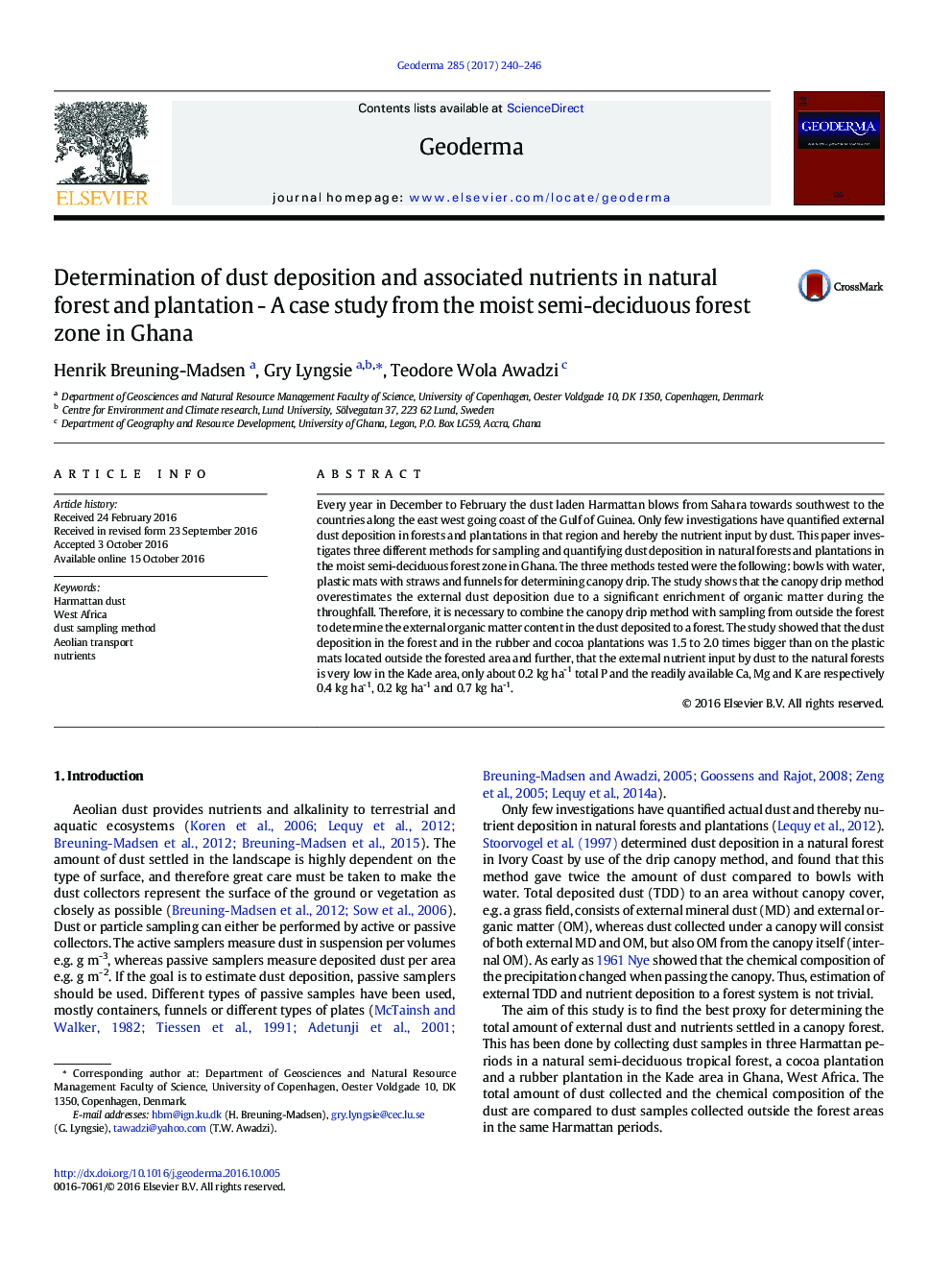| Article ID | Journal | Published Year | Pages | File Type |
|---|---|---|---|---|
| 6408223 | Geoderma | 2017 | 7 Pages |
â¢Dust deposition in tropical forest is 1.5 to 2 times higher than the dust captured by short grass.â¢%C in the dust more than doubles during the canopy throughfall.â¢No significant differences in dust deposition between forest and plantations.â¢Plant available nutrient input by dust to forests is very low, e.g. 0.4 kg ha-1 Ca.
Every year in December to February the dust laden Harmattan blows from Sahara towards southwest to the countries along the east west going coast of the Gulf of Guinea. Only few investigations have quantified external dust deposition in forests and plantations in that region and hereby the nutrient input by dust. This paper investigates three different methods for sampling and quantifying dust deposition in natural forests and plantations in the moist semi-deciduous forest zone in Ghana. The three methods tested were the following: bowls with water, plastic mats with straws and funnels for determining canopy drip. The study shows that the canopy drip method overestimates the external dust deposition due to a significant enrichment of organic matter during the throughfall. Therefore, it is necessary to combine the canopy drip method with sampling from outside the forest to determine the external organic matter content in the dust deposited to a forest. The study showed that the dust deposition in the forest and in the rubber and cocoa plantations was 1.5 to 2.0 times bigger than on the plastic mats located outside the forested area and further, that the external nutrient input by dust to the natural forests is very low in the Kade area, only about 0.2 kg ha-1 total P and the readily available Ca, Mg and K are respectively 0.4 kg ha-1, 0.2 kg ha-1 and 0.7 kg ha-1.
